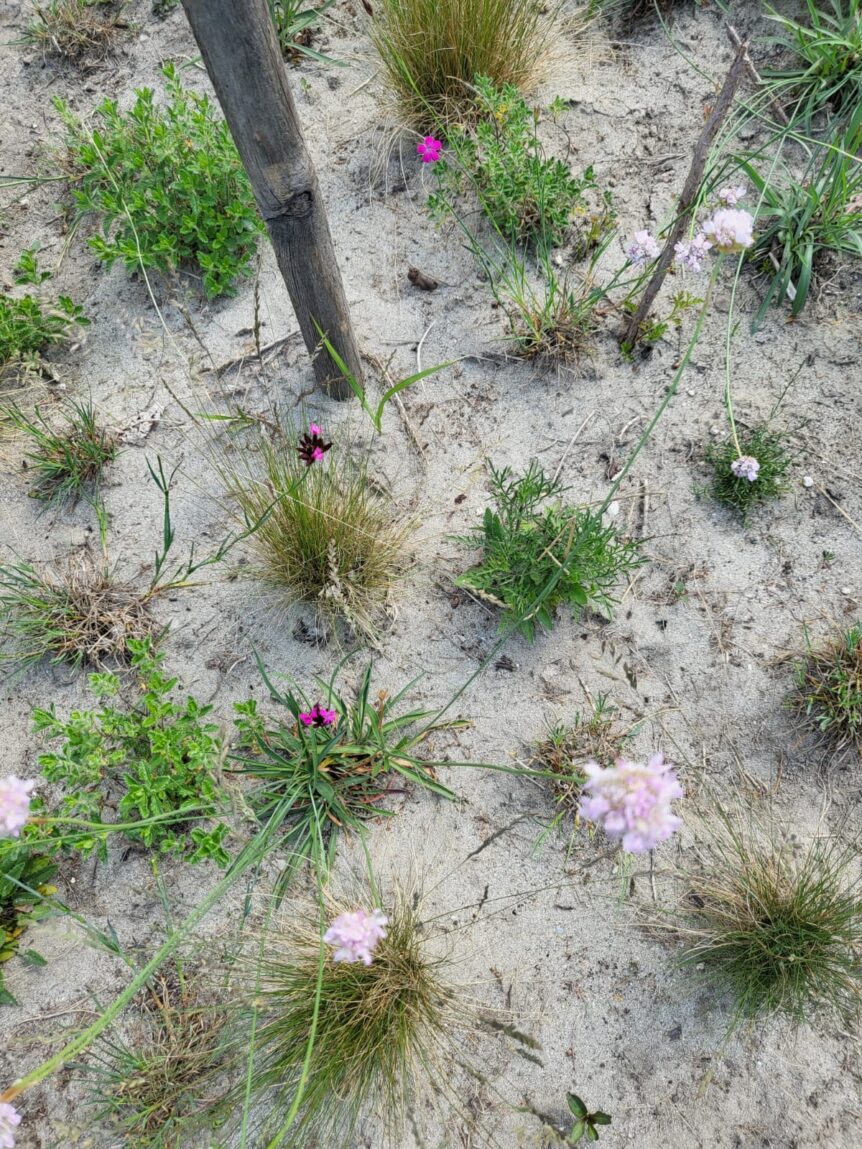It is one of the concrete intervention actions aimed at “restoring” and re-naturalizing habitats. In general, these actions include soil interventions, the removal of invasive species, and floristic improvement. Additionally, the development of guidelines for habitat management and enhancement is planned to ensure long-term ecological balance and sustainability.
Through Action C4, new patches, i.e., ecological corridors and core areas, were created to reduce fragmentation and increase the connectivity of the target project habitats.
Despite some difficulties encountered during implementation, due to severe degradation and impoverishment, as well as extreme weather events (habitat 2330 – SAC IT2010013 “Ansa di Castelnovate”), the need for integration of pure seeds (habitat 6210 – SAC IT1180027 “Confluence Po-Sesia-Tanaro”), and the rescheduling of activities following the Covid-19 emergency (habitat 4030 – SAC IT2010010 “Brughiera del Vigano” and SAC IT2010012 “Brughiera del Dosso,” habitat 6210 – SAC IT1180027 “Confluence Po-Sesia-Tanaro”), all planned interventions were successfully completed.
Below is a summary of the plant materials used and the implementation methods for the interventions in the various project habitats and Natura 2000 sites.
Habitat 2330
SAC IT2010013 “Ansa di Castelnovate” (Vizzola Ticino site)
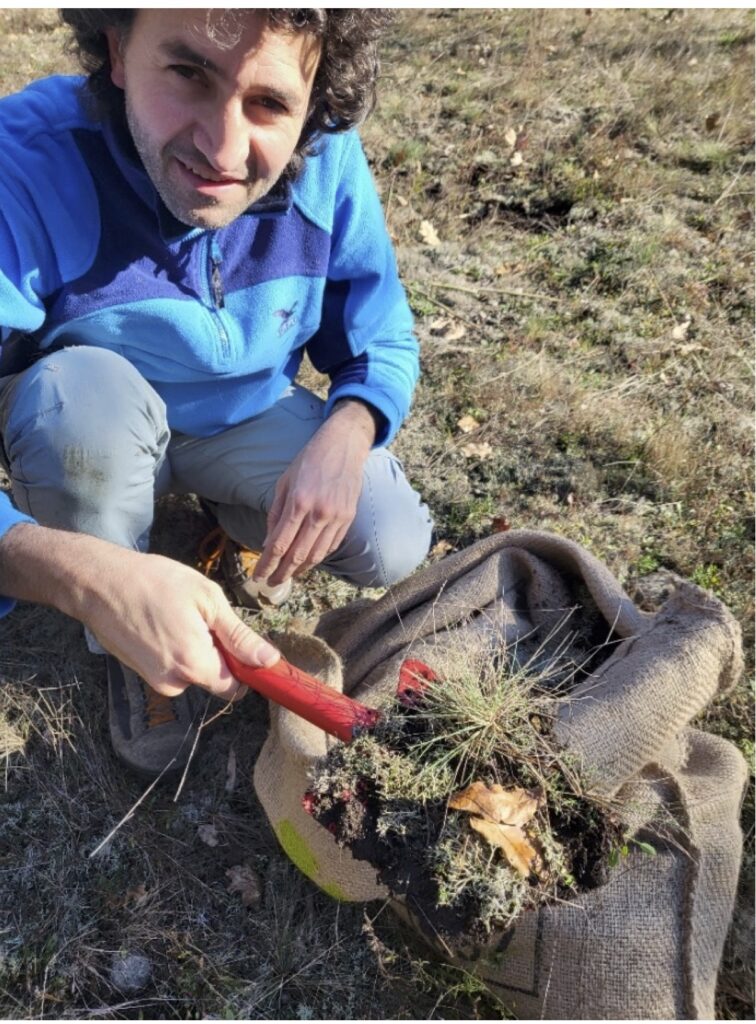
Material collected from the donor site, highlighting Corynephorus canescens tufts.
- Plant materials used
The top layer of substrate (first 3-4 cm) containing lichen crusts and small tufts of Corynephorus canescens was raked up (a total of approximately 25 kg of material was collected).
Compared to the original donor habitat (the same H2330 located at Ansa di Castelnovate), new sites had to be found to collect material, as the condition at the time of the interventions was more degraded and impoverished.
Of the two new areas identified (one in Cameri, “Cascina Bornago” location, and the other in Pombia, “Il Casone” location, both in the province of Novara), only the second was used, as the first was inaccessible in autumn 2023 due to extreme weather events. - Completed interventions
Material collection.
Distribution of the collected material at SAC IT2010013 to form a compact layer and thus create a dense source area of propagules covering approximately 30 m², which had been previously characterized in terms of floristic composition. The above interventions sought to expand already existing patches.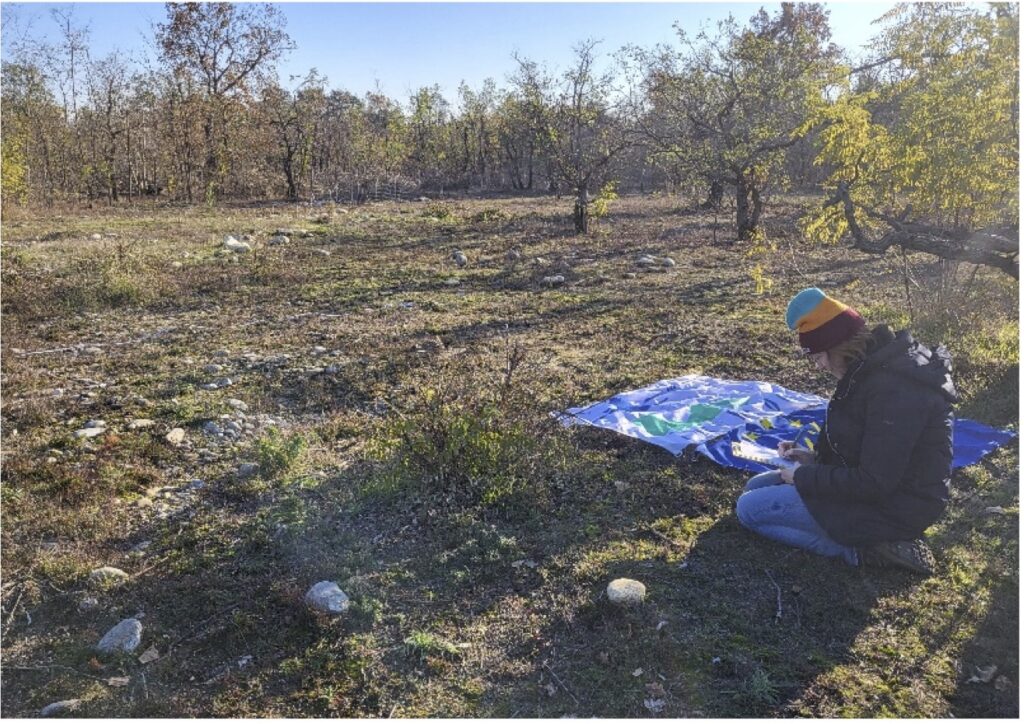
Intervention site at Ansa di Castenovate.
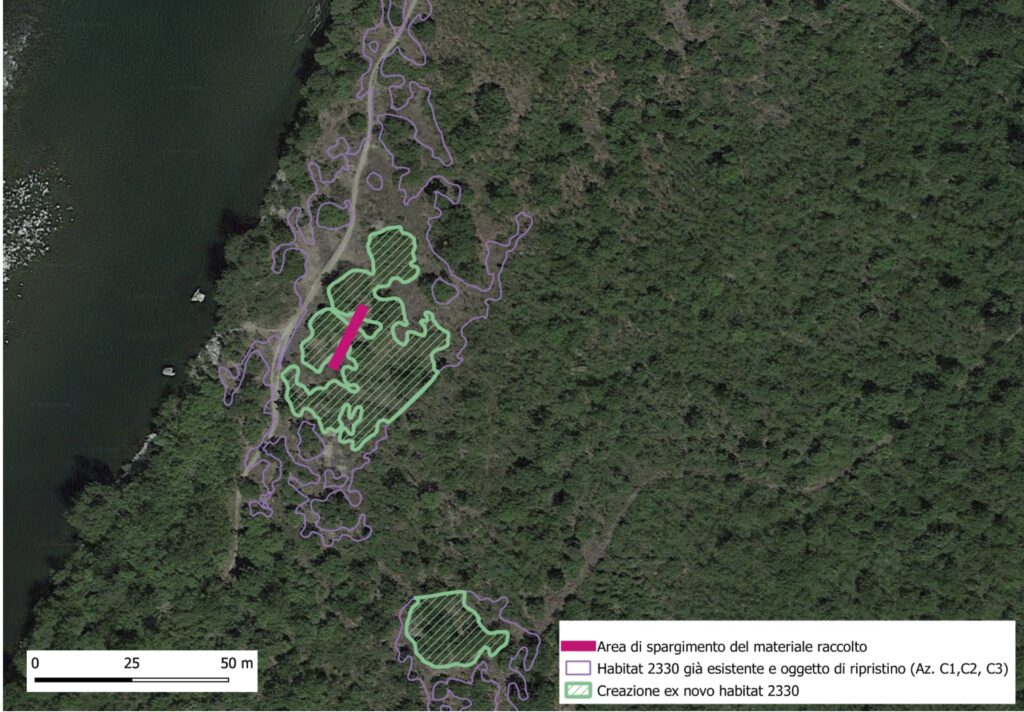
Map of the intervention site.
Habitat 4030
SAC IT2010010 “Brughiera del Vigano” (site at Golasecca and Somma Lombardo) and SAC IT2010012 “Brughiera del Dosso”
- Plant materials used
Heather (Calluna vulgaris) was collected in Brughiera del Dosso (SAC IT2010012).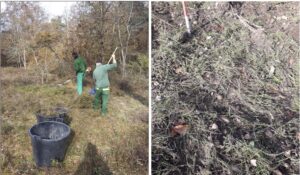
Raccolta di brugo effettuata nella ZSC IT2010012 (a sinistra) e porzione dell’area a Golasecca (a destra) in cui è stato successivamente distribuito per la creazione ex-novo dell’habitat 4030
Interventions carried out
Tree/shrub thinning and removal, including mechanical uprooting of non-native species (Pinus rigida, Pinus strobus, and Robinia pseudoacacia), and topsoil inversion operations. Heather was spread, and in the Brughiera (heath) del Dosso, cultivation care (grass cutting by hand, one intervention for two years) was conducted.
For the Golasecca site, the above interventions aimed at expanding an already existing patch. In the case of the Somma Lombardo site and the Brughiera del Dosso, the goal was to extend an existing corridor under a power line, where the habitat was present in a fragmented manner.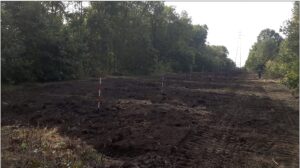
Corridoio sotto linea elettrica dopo gli interventi di diradamento e sradicamento della componente arbustiva e realizzazione di plot di top soil inversion
Habitat 6210
SAC IT1180027 “Confluenza Po-Sesia-Tanaro” (site at Capraglia and Isola S. Antonio) and SAC IT1120010 “Lame del Sesia” (site at Oldenico and Villata)
- Vegetation materials used
Seed mixture of high natural value (referred to as “fiorume”) was collected through direct threshing of hay using specially built agricultural machines.
The donor sites were stable meadows, at least 40 years old, located within Natura 2000 areas. Specifically:
– For SAC IT1180027 “Confluence of the Po-Sesia-Tanaro rivers”, meadows inside the SAC “Basso corso dello Scrivia,” (the lower course of the Scrivia river) located in Castelnuovo Scrivia (about 15 km away), were chosen.
– For SAC IT1120010 “Lame del Sesia,” meadows within the same SAC were selected.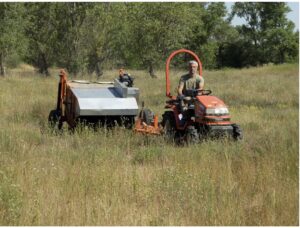
Raccolta del fiorume dal sito donatore del fiorume a Castelnuovo Scrivia (AL).
- Interventions carried out
Collection of seed mixture (fiorume), cutting of invasive herbaceous species (especially Solidago gigantea in SAC IT1120010), followed by removal of materials.
Containment of invasive woody species Amorpha fruticosa and Robinia pseudoacacia through cutting with a shredder and endotherapy, respectively, in SAC IT1180027.
Sod-cutting and topsoil inversion in SACIT1180027 and SAC IT1120010, respectively, to prepare areas before spreading the fiorume.
In particular, for SAC IT1180027 “Confluence of the Po-Sesia-Tanaro rivers”, as already described for Action C1, the restoration followed a dynamic approach consistent with the dynamic nature of the area. Therefore, it was not carried out over the entire 10-hectare area but instead focused on two sub-areas (or trigger areas) aimed at initiating the formation process of habitat H6210, covering a total area of 1 hectare. Each sub-area was dominated by a different non-native species: one by Amorpha fruticosa and the other by Robinia pseudoacacia. Contemporaneously, two patches of woody species were created using the serial patch method (Assini and Sartori, 2003) to serve as habitat ecotones and seed carriers of native species.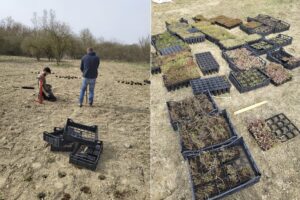
Planting of herbaceous species typical of habitat 6210
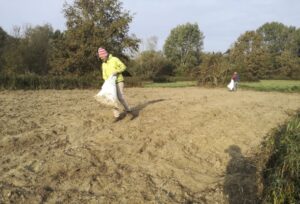
Spreading of the seed mixture
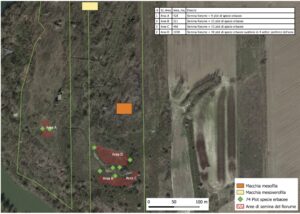
Location of the interventions carried out in the site at Isola S. Antonio (AL)
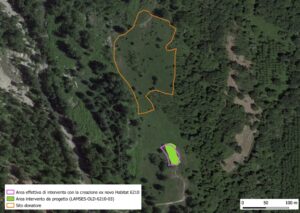
Localization of the intervention area for the creation ex novo of Habitat 6210 and the donor site
State of the action: ENDED



